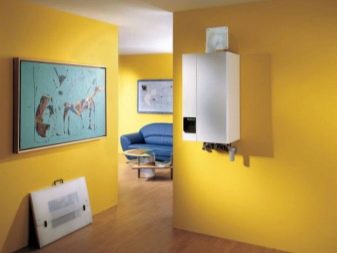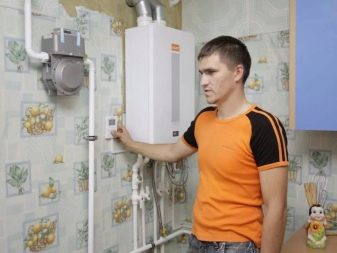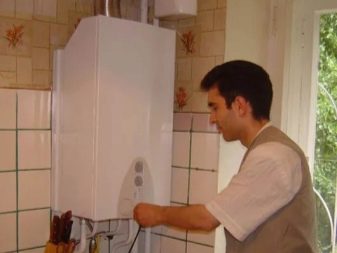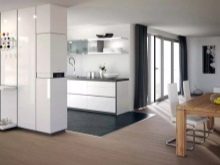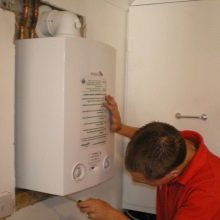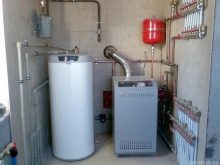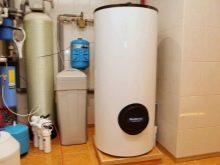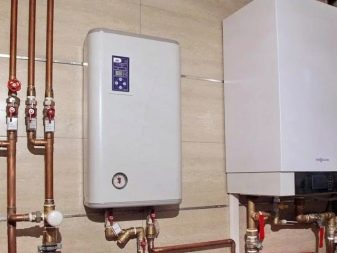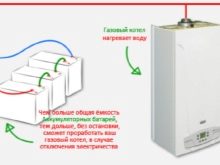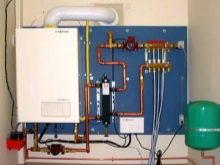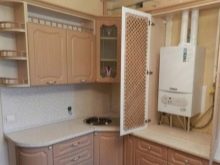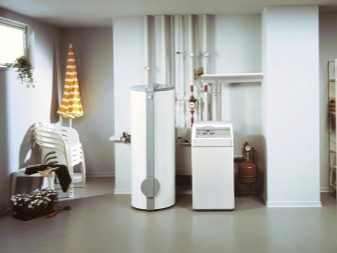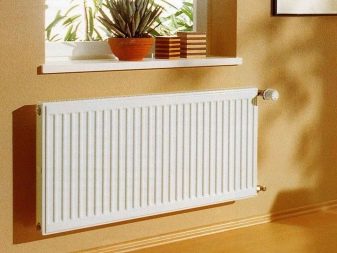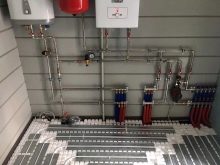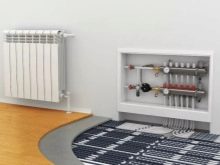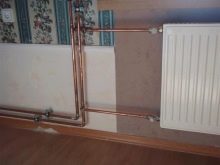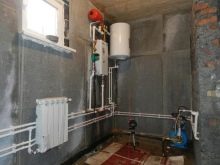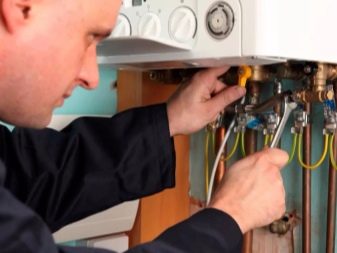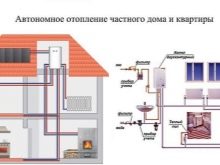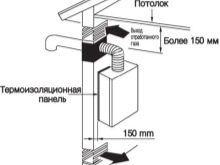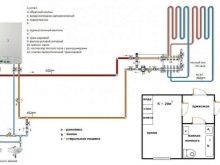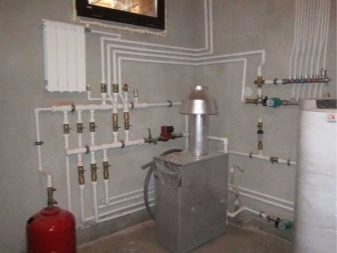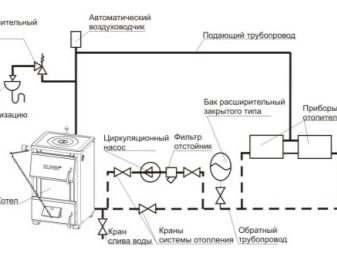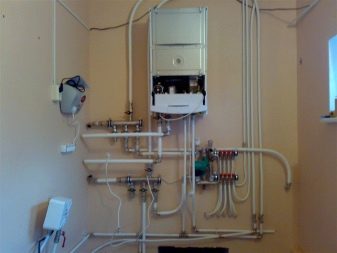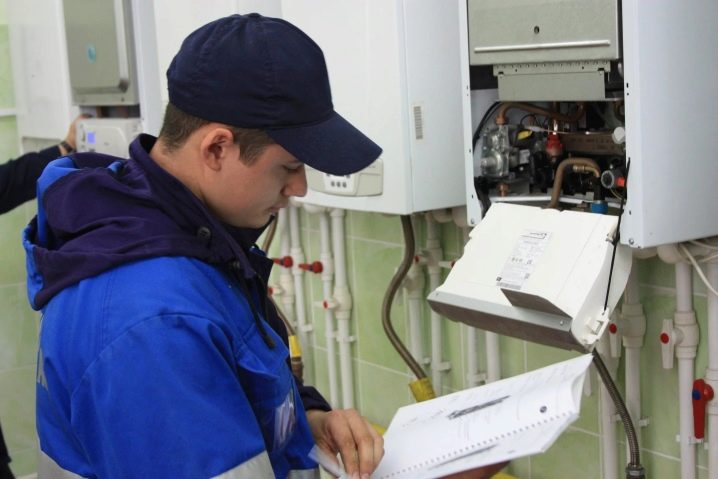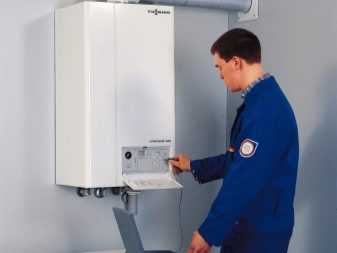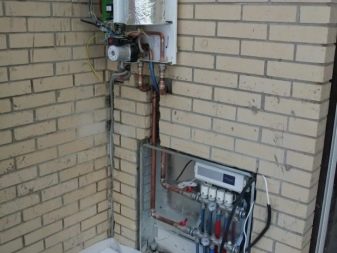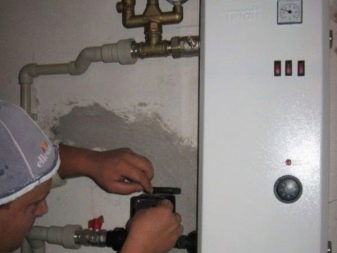Types and installation process of autonomous heating
The main problem of many homeowners is heating, especially this issue is relevant for those who live in a zone of harsh climatic conditions. Often, centralized heating does not cope with its task and does not properly heat the rooms, therefore, in order to create a suitable microclimate in an apartment or house, most of the residents install autonomous heating. Such a system is easy to maintain and allows you to independently control the temperature in the rooms.
Special features
Arrangement of modern housing is based on the use of the latest technologies in the field of water supply, engineering communications and heating. With the advent of advanced models of heating equipment on the market, many have opened a unique opportunity to install individual systems,therefore, autonomous heating is currently very popular. Such installations consist of an independent source of heat to which the pipeline is connected. They are ideal for heating both apartments and country houses. Heating systems are located in the house itself, which means that the owners can, at their discretion, set the right temperature and save costs by choosing the best option for the boiler to work.
Installation of autonomous heating is simple, so it is quite realistic to do it yourself, while for residents of apartments in new buildings this does not make any special problems, and owners of housing with the old layout for installing equipment need to obtain permission from gas and utilities.
At the beginning of the installation, of course, will require significant financial costs, but over time such a decision will justify itself and the savings will be noticeable. Most types of boilers that are used for joint ventures are equipped with closed combustion chambers, this makes their operation completely safe. Heated air supplies the system with the help of special fans, and the products of combustion are discharged to the outside through pipelines placed in the chimney.Since the unit operates autonomously, when the temperature in the room decreases, the equipment starts up automatically, allowing you to avoid excessive fuel consumption.
Before you decide on the placement of autonomous heating, you need to prepare the relevant documentation. Exceptions are solid / liquid fuel and electricity systems. If all the calculations have been made and the tenants have determined that it is much more profitable for them to operate gas heating, then they should contact the gas supplying organization, get a project and technical specifications for installation. In addition, you will need a technical passport of housing, documents confirming the right to property and land.
Advantages and disadvantages
Decentralized heating is a modern heating system, operating within a country house, cottage or apartment and not dependent on the capabilities of utilities. Thanks to the individual control of heat supply, homeowners receive "freedom" and can independently set the desired temperature.
The main advantages of installing such systems in an apartment building and a private house include:
- The ability to start and end the heating season at its discretion.This is not central heating, in which you have to sit in a cold apartment and wait for the systems to start.
- Convenient operation. Heating is adjusted automatically.
- Efficiency. Heat can be set as the maximum and minimum. This is especially true when you have to leave the house for a few days. In this case, it is enough to turn off the equipment and not worry that you have to pay “empty” payments, as it does with centralized heating, where bills come regardless of residence or lack of owners.
- Extra comfort. Thanks to double-circuit boilers, it is possible to use hot water all year round. One of the circuits is responsible for heating and it is connected to the boiler, and the second provides hot water to the kitchen and bathroom. In addition, in private housing, the system frees owners from problems with the furnace firebox.
- Aesthetic look. In country houses, the device is placed in separate rooms, so living rooms can be designed for any design, without worrying about the fact that the stove will not fit into the overall interior.
As for the shortcomings of autonomous heating, they are mainly associated with the installation process, the launch of equipment and obtaining a permit.
In addition, the minuses of the systems are:
- Large financial costs for the purchase of components. You also have to bear the cost of its connection, hiring specialists for this.
- Installation of individual heating is carried out according to special projects, therefore it often requires dismantling of the inter-wall partitions, which entails additional repair of the flooring and finishing of the rooms.
- The autonomous system should be regularly checked by service centers. This must be done at least once a year.
The above disadvantages can be solved; therefore, having weighed the pros and cons, it can be said that individual heating has many advantages over central heating, allowing you to enjoy a comfortable life.
Sources of heat supply
At the moment, the most popular is the air, electric and water heating system. Each type of installation is characterized by its own advantages and disadvantages and is selected depending on the technical features of the housing that needs to be heated. With water heating, the heat source is the boiler itself; it heats the water and distributes it throughout the system, transferring it to the batteries.The boiler can operate from such energy sources as liquid / solid fuel, electricity and gas.
There are also models of boilers that use combined fuel.
When a cottage or apartment is not connected to the gas mains, electric heating is considered the optimal choice for autonomous heating. Using electricity as a source of energy, it is possible to perform heating of the room using infrared technology, converters, electric boilers and convectors. The equipment is selected taking into account the area of the heated room and the time spent in it. Electric boilers are in great demand, they warm the premises well, because they have powerful heating elements, but they require a lot of electricity. Therefore, in apartments and houses, it is often preferred to install convectors that are easy to install, economical and fit perfectly into any interior.
An individual system based on electrical energy has the following advantages:
- reliability;
- operational safety;
- convenient control;
- full autonomy.
At the same time, choosing electricity for heating should take into account that it is expensive, and for the continuous operation of the equipment requires an uninterrupted supply of energy.
If the housing is connected to gas communications, then for its economical heating, the correct solution would be the installation of thermal plants operating on gas.
Despite the fact that gas heating will be cheaper, there are also significant drawbacks:
- danger of exploitation;
- the need for periodic monitoring of gas services;
- high cost of equipment;
- complex and expensive installation.
But since gas networks are not present everywhere, many homeowners decide to install units that run on solid or liquid fuels. Their main advantage is the affordable price of energy, and the minus is the need for additional storage space for fuel and regular maintenance.
Device
The scheme, according to which individual heating systems work, looks like this: the boiler, burning fuel, performs heating of water and transfers it to the pipes, and they, in turn, heat the air. Any source of energy can be used as a fuel. His choice, as a rule, depends on the technical and operational features of the boiler. In addition to the main heat generator, the constructions are additionally equipped with automation, control valves, circulation pumps, batteries and pipelines.
Batteries (radiators) are a heating device that performs convector-radiator functions. They consist of several sections in which internal channels are placed for heat circulation. To date, steel, cast iron, bimetal and aluminum radiators are on sale. In this case, cast-iron products are most often used in the design of retro style, chosen for low-temperature systems, and aluminum are excellent for air heating. The most common types are bimetallic batteries, they are resistant to aggressive media and high pressure.
Many apartments and houses are also heated with the help of the unique “warm floor” system. Her device involves the installation of pipes in the floor filled with concrete screed, through which hot water circulates. A feature of such a system is that it provides uniform heating of the premises, excluding cold zones. To improve the efficiency of heating, it is combined with panel radiators and must be thermally insulated. Air heating, on the other hand, is characterized by a supply and exhaust device, in which the air heated by the boiler is transferred to the batteries by means of special ventilation ducts.
Regardless of the type of heating his work is impossible without a pipeline. Copper, plastic and metal-plastic pipes are usually used for the installation of individual heating. Sometimes there are also steel pipelines, but they have a short service life and a high price, so plastic products are the best option. They are produced from polyethylene and polypropylene. At the same time, metal-plastic pipes are considered to be much better, since they are made of several materials: aluminum, polyethylene and a protective layer of PVC.
In addition to all of the above elements, the device autonomous system also requires connecting and fasteners, which are fixed by soldering or welding.
Installation
To perform the installation of autonomous heating is quite possible with their own hands. Before you do this, you should examine in detail the features and the main principle of the system, as well as consider the most optimal scheme by which you can install the equipment. The scheme should be developed independently, as the drawings and calculations prepared for other houses or apartments will not work.This installation does not allow the use of templates.
After that, you need to think about the possible type of heating and determine the power of the heat generator, taking into account the following criteria:
- Maximum heating mode. This indicator is especially important in severe frosts, when it is necessary to increase the temperature regime.
- The number and location of radiators in the house. The level of heat loss and energy consumption will also depend on this.
- Thermal insulation characteristics of the material that was used in the exterior and interior decoration of housing. For example, houses from a tree warm, and constructions from concrete, a brick and a stone cold.
- The layout of the wiring system. It is important to place the boiler correctly. The heat generator should be placed at a height below 30 cm from the batteries. In private homes, equipment is placed on a floor level. At the same time, the feed pipes must be additionally closed with thermal insulation.
Thanks to these indicators, you can make the right calculations and make the heating efficient with minimal energy costs. Once all the design issues have been resolved, the installation itself begins. To do this, the following tools are prepared: drill, hammer, gas and adjustable wrenches.According to the drawings and diagrams, small holes are drilled in the walls, which should correspond to the diameter of the pipeline. If you make the holes larger, you will have to seal the gaps in the future, and this will entail additional costs for building material.
The installation of the system consists of two stages: pipe wiring and boiler strapping. To do this, use a two-pipe, collector, vertical or horizontal scheme. For apartments, a two-pipe layout is well suited, during which the supply and return flows coincide. Choosing a dead-end scheme, you will have to make the opposite circulation. The one-pipe scheme looks different: the water entering the battery will return to the same pipe.
The main circuit is placed around the perimeter of the room, it must pass through partitions. Radiators run parallel to this circuit. The installation diagram of each battery has a vertical view, its thermal heads are placed on the return connection line, completing with a valve. Radiators must be fixed strictly adhering to the level.
Then prepare the places in the walls, where the planned installation of heating elements.It is better to do this work right away, since after laying pipes it will be inconvenient. Then you can proceed to the installation of all components of the autonomous system. First install the boiler, as the remaining devices are connected to it in series.
Tying the boiler can be made according to the following scheme:
- supply to the battery comes directly from the heat unit;
- on the return line set expansomat;
- next to the boiler first place the expansion tank, and then the distribution pump;
- air vent is mounted at the highest point, and then radiators are fixed to it.
When it is planned to operate the floor heat generator, the system is made open. That is, an expansion tank will be placed in its upper part, where periodically it is necessary to add water. In addition, the unit will need to connect to the water supply. It is necessary to fill the system with water.
When the installation is complete, the equipment should be tested. If something is done incorrectly, it will become known and will require adjustment. In addition, the scheme is checked for tightness. To do this, use water, it is run through the pipes and see if there are gaps and leaks.In case of faults, defects are eliminated. It is important to remember that the drainage outlet must be installed at the lowest point of the return line, otherwise air stagnation will form in the system and it will not work.
Tips
Recently, the owners of apartments and country houses are trying to equip housing with modern equipment and systems. Therefore, the installation of autonomous heating is now very popular. It can be installed either with the help of specialists or independently.
If you plan to do the work yourself, you should consider the following recommendations of experts:
- For apartments, it is best to choose electric or gas wall-mounted boilers, which are equipped with a circulation pump. Thus, the system will turn out to be closed and will work according to the forced heat distribution scheme.
- The boiler must not be connected to the ventilation shafts. In the event that there is no chimney in the room, then the right choice would be a boiler with a closed chamber, where gas is discharged through the walls.
- In order for an autonomous system to work efficiently, it is necessary to calculate its thermal power, taking into account that 100 W of energy is consumed per 1m2.
- Individual heating can be done with two circuits. Due to this, in addition to heating, housing will also be provided with hot water.
- Before proceeding to the installation work, it is recommended to warm the housing well. Otherwise, the boiler will have to work with increased load to heat the surrounding air.
- Good feedback from consumers received the system "warm floors". To save electricity on such heating, it is not necessary to lay pipes over the entire surface of the floor covering, but to make just a warming up “walkway”.
- Convectors are best installed under the windows, thus it will be possible to avoid heat loss and drafts.
- Installation of an electric boiler should be carried out with a mandatory grounding.
- Thermostats are recommended to be mounted at a height of 1.5 m from the floor in the coldest places of the room.
- If in an apartment or house all the premises are located along the same line, the installation of a single-pipe scheme does not make sense, because the pipe will have to be turned back to the boiler.
- When choosing pipes for heating, preference should be given to products with a diameter of at least 32 mm. Elbows can be purchased with a diameter of 20 mm.
- In order to ensure uninterrupted heating of rooms, it is desirable to choose combined boilers that work both from electricity and gas. Thanks to this versatility, you do not have to worry about heating in the absence of electricity.
- Protecting boilers from damage will help their installation. Equipment must be set strictly horizontally.
On how to make their own independent heating, see below.


